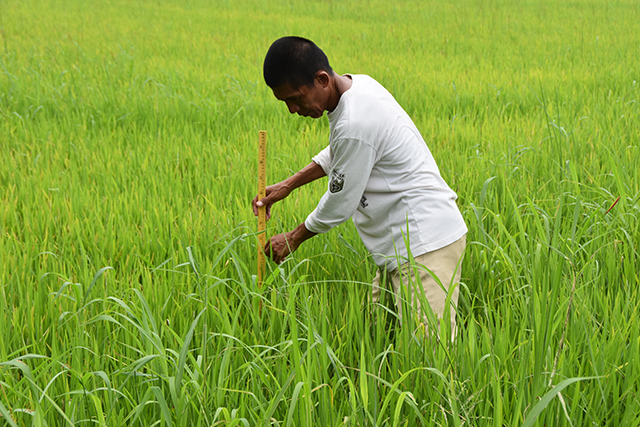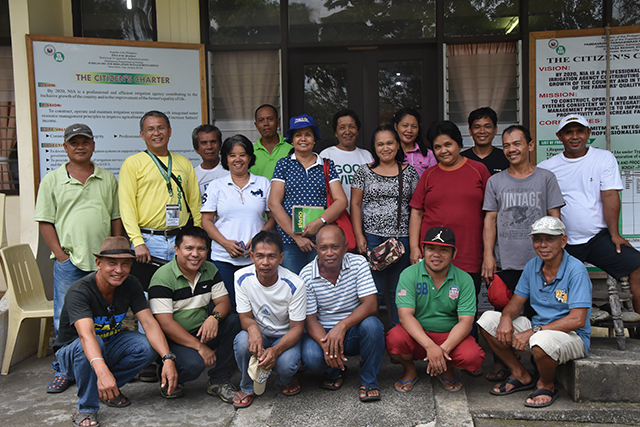 In the upland areas of Masinloc, Zambales, a farm is measured by a balitang – a box of rice paddy with a size of more or less 6,000 square meters.
In the upland areas of Masinloc, Zambales, a farm is measured by a balitang – a box of rice paddy with a size of more or less 6,000 square meters.
Mario Ermita, 59, owns five balitang on his farm and spends P15, 000 on labor for transplanting. Ermita has cut down his expenses when he was introduced to a technology for transplanting through the project titled Accelerating the development and dissemination of associated rice production technologies.
“From P3, 500 per balitang, I now spend P300 through the drumseeder. This amount covers a day’s wage for the operator,” Ermita narrates.
Engr. Evangeline Sibayan, PhilRice’s water management expert, said the project’s aim is to increase production and reduce inputs through development, dissemination, and adoption of appropriate crop management technologies in both irrigated and rainfed ecosystems.
“The other technologies we offered to the farmers include the alternate wetting and drying (AWD) water saving technology, minus-one element technique (MOET), rice crop manager (RCM), and the use of new varieties,” Sibayan elaborates.
With more than 400 on-site briefings, 135 field days, and 1,812 techno-demo farms established nationwide by the implementers, Ermita is just one among the thousands of beneficiaries of the project.
“Each techno-demo farm has at least 20-25 farmers. Most of them are members of an irrigators association (IA) or farmers’ organization (FO),” Sibayan says.
Project impact, figures
 In Region V, a 63% decrease in seeding rate was recorded when the farmers adopted the use of plastic drumseeders. According to Sibayan, the ratio decreased from 100-150 kg/ha to 37-60 kg/ha.
In Region V, a 63% decrease in seeding rate was recorded when the farmers adopted the use of plastic drumseeders. According to Sibayan, the ratio decreased from 100-150 kg/ha to 37-60 kg/ha.
The technologies, MOET and RCM, also helped farmers in Ilocos Norte achieve higher yields from 5.3 t/ha to 6.5 t/ha. The mean yield of 10 techno-demo farms in Zamboanga Del Norte and Zamboanga Del Sur also increased by 5.8%.
Farmers in Mallig, Isabela reduced their fuel consumption from 2.5 drums to 1.5 drums per cropping season, thanks to their adoption of AWD.
In 2015, the irrigators association in San Rafael, Bulacan reported a 3.8% reduction in power cost, from 118, 178 kWh to 113, 680 kWh. Sibayan attributes this to the adoption of AWD by the farmer members of Kapatiran Irrigators Association.
“The technologies we promoted have proven to be resource-use efficient. As we improve the awareness of these technologies, we have geared not only towards the increase of our country’s national production, but also on the reduction of farm inputs both in irrigated and rainfed areas,” Sibayan concluded.
For more information on the latest farming technologies, you may contact the PhilRice Text Center at 0920-9111398.




